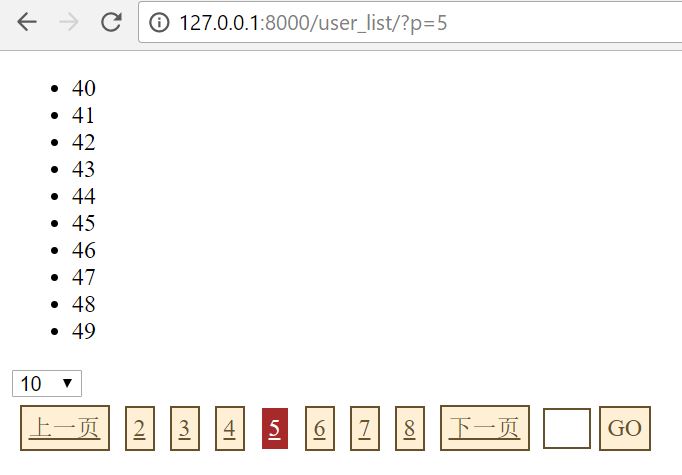Django 中 cookie的使用
Cookie是瀏覽器在客戶端留下的一段記錄,這段記錄可以保留在內存或者硬盤上。因為Http請求是無狀態的,通過讀取cookie的記錄,服務器或者客戶端可以維持會話中的狀態。比如一個常見的應用場景就是登錄狀態。Django裏面,對cookie的讀取和設置很簡單。Cookie本身的格式類似字典,因此可以通過request的key或者get獲取;然後他的設置則是通過response對象的set_cookie設定; 如果要取消cookie,把過期時間設置為當前時間就行了。
獲取Cookie:
request.COOKIES[‘key‘]
request.get_signed_cookie(key, default=RAISE_ERROR, salt=‘‘, max_age=None)
參數:
default: 默認值
salt: 加密鹽
max_age: 後臺控制過期時間設置Cookie:
rep = HttpResponse(...) 或 rep = render(request, ...)
rep.set_cookie(key,value,...)
rep.set_signed_cookie(key,value,salt=‘加密鹽‘,...)
參數:
key, 鍵
value=‘‘, 值
max_age=None, 超時時間
expires=None, 超時時間(IE requires expires, so set it if hasn‘t been already.)
path=‘/‘, Cookie生效的路徑,/ 表示根路徑,特殊的:跟路徑的cookie可以被任何url的頁面訪問
domain=None, Cookie生效的域名
secure=False, https傳輸
httponly=False 只能http協議傳輸,無法被JavaScript獲取(不是絕對,底層抓包可以獲取到也可以被覆蓋)例1 設置一個login登錄界面,一個index登錄成功之後的跳轉界面,如果沒有登錄那麽自動跳轉到登錄界面
views.py
def index(reqeust):
# 獲取當前已經登錄的用戶
v = reqeust.COOKIES.get(‘username111‘)
if not v:
return redirect(‘/login/‘)
return render(reqeust,‘index.html‘,{‘current_user‘: v})註意Cookie的超時時間有2種方式,一個是直接指定max_age(N秒後超時),一個是指定expires後面跟一個具體的時間對象
httponly可以禁止JavaScript獲取這個值,但是實際上沒有什麽鳥用,chrome或者抓包都能輕松獲取所有的cookie
index.html
<!DOCTYPE html>
<html lang="en">
<head>
<meta charset="UTF-8">
<title></title>
</head>
<body>
<h1>歡迎登錄:{{ current_user }}</h1>
</body>
</html>login.html
<!DOCTYPE html>
<html lang="en">
<head>
<meta charset="UTF-8">
<title></title>
</head>
<body>
<form action="/login/" method="POST">
<input type="text" name="username" placeholder="用戶名" />
<input type="password" name="pwd" placeholder="密碼" />
<input type="submit" />
</form>
</body>
</html>例2:
現實生活中,一般是把這個驗證cookie的功能寫成裝飾器,這樣直接在其他函數上面調用就行了
把例1改一下
def auth(func):
def inner(reqeust,*args,**kwargs):
v = reqeust.COOKIES.get(‘username111‘)
if not v:
return redirect(‘/login/‘)
return func(reqeust, *args,**kwargs)
return inner
@auth
def index(reqeust):
# 獲取當前已經登錄的用戶
v = reqeust.COOKIES.get(‘username111‘)
return render(reqeust,‘index.html‘,{‘current_user‘: v})例3: 我們知道可以使用fbv或者cbv來路由函數。例2使用了fbv的方式,用cbv也能實現
cbv裏面,如果只打算裝飾一個方法,[email protected]_decorator就行;如果打算裝飾這個類裏面所有的方法,那麽在整個類的最上面進行裝飾
views.py
@method_decorator(auth,name=‘dispatch‘)
class Order(views.View):
# @method_decorator(auth)
# def dispatch(self, request, *args, **kwargs):
# return super(Order,self).dispatch(request, *args, **kwargs)
# @method_decorator(auth)
def get(self,reqeust):
v = reqeust.COOKIES.get(‘username111‘)
return render(reqeust,‘index.html‘,{‘current_user‘: v})
def post(self,reqeust):
v = reqeust.COOKIES.get(‘username111‘)
return render(reqeust,‘index.html‘,{‘current_user‘: v})urls.py
url(r‘^order/‘, views.Order.as_view()),
例4 我們還可以通過JavaScript或者JQuery來設置Cookie,比如在前面分頁的代碼基礎上,我們增加一個自定義顯示行數的功能。
user_list.html 這裏下了一個JQuery的插件,這樣讀取設置cookie比較容易;而且,我們還限制了cookie的使用範圍,不是默認的所有範圍,而是僅僅局限於/user_list這個路徑裏面
<!DOCTYPE html>
<html lang="en">
<head>
<meta charset="UTF-8">
<title></title>
<style>
.go{
width:20px;
border: solid 1px;
color: #66512c;
display: inline-block;
padding: 5px;
}
.pagination .page{
border: solid 1px;
color: #66512c;
display: inline-block;
padding: 5px;
background-color: papayawhip;
margin: 5px;
}
.pagination .page.active{
background-color: brown;
color: white;
}
</style>
</head>
<body>
<ul>
{% for item in li %}
{% include ‘li.html‘ %}
{% endfor %}
</ul>
<div>
<select id="ps" onchange="changePageSize(this)">
<option value="10">10</option>
<option value="30">30</option>
<option value="50">50</option>
<option value="100">100</option>
</select>
</div>
<div class="pagination">
{{ page_str }}
</div>
<script src="/static/jquery-1.12.4.js"></script>
<script src="/static/jquery.cookie.js"></script>
<script>
$(function(){
var v = $.cookie(‘per_page_count‘, {‘path‘: "/user_list/`"});
console.log(v)
$(‘#ps‘).val(v);
});
function changePageSize(ths){
var v = $(ths).val();
console.log(v);
$.cookie(‘per_page_count‘,v, {‘path‘: "/user_list/"});
location.reload();
}
</script>
</body>
</html>views.py 從前端獲取每頁行數,實例化的時候傳遞給我們的分頁類
def user_list(request):
current_page = request.GET.get(‘p‘, 1)
current_page = int(current_page)
val = request.COOKIES.get(‘per_page_count‘,10)
val = int(val)
page_obj = pagination.Page(current_page,len(LIST),val)
data = LIST[page_obj.start:page_obj.end]
page_str = page_obj.page_str("/user_list/")
return render(request, ‘user_list.html‘, {‘li‘: data,‘page_str‘: page_str})
本文出自 “麻婆豆腐” 博客,請務必保留此出處http://beanxyz.blog.51cto.com/5570417/1956951
Django 中 cookie的使用
